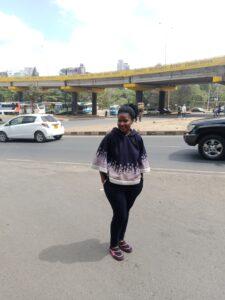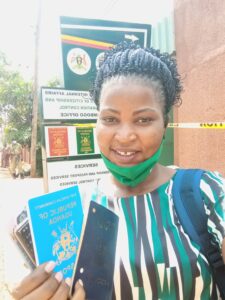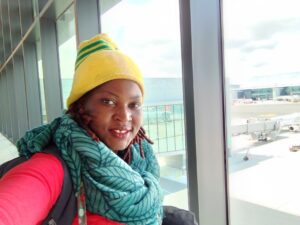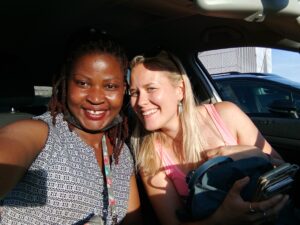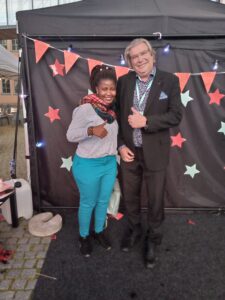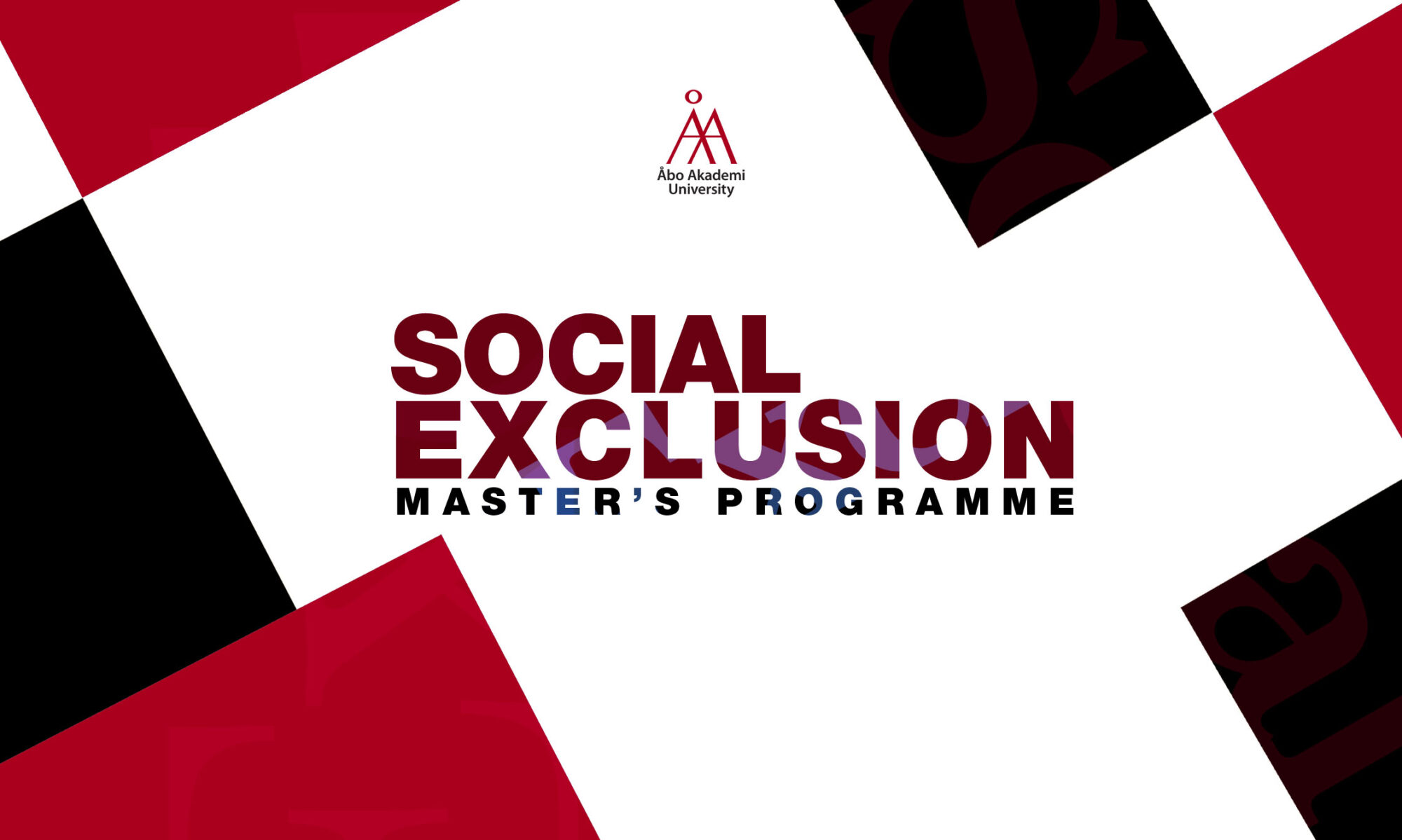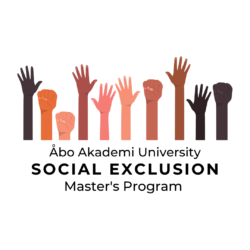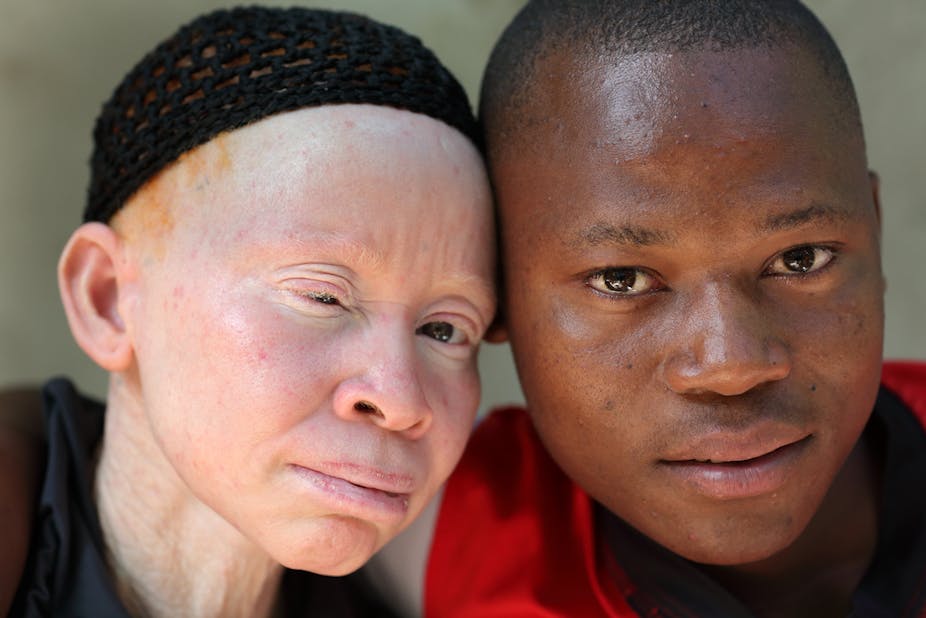Written by Johanna Poggemann
When reading up on Finland’s global rankings, one comes across a lot of positive reports: It is supposed to be the most stable (The Global Economy 2021) and the freest country in the world alongside Sweden and Norway (Freedom House 2021) while also having the best education and life satisfaction (OECD 2021). Overall, it is said to be the happiest country in the world (World Happiness Report 2021). Yet, looking deeper, Finland also reports some of the highest depression cases worldwide (WHO 2017).
I have always wondered about this distinct discrepancy. How can one country top the rankings both for happiness and depression? And how does this affect its people?
Being diagnosed with depression can have several impacts, not only on an individual’s own life but also on their social environment and even the country’s economy. One factor that has not been researched enough in the domain of mental illness in Finland is that of social exclusion. Hence, questions arise: What notions of social exclusion can be found in the exclusion of the depressed in Finland? How are depressed people excluded from Finnish society and what concept of social exclusion can be used to grasp what is happening?
This was the goal for a paper I have written in my “Social Exclusion” class, building on the works of Ruth Levitas (2005), Hilary Silver (1994) and Amartya Sen (2000). Here, I would now like to present an excerpt of my findings, focusing solely on the analysis of the social exclusion of the depressed in Finland through the lens of Sen’s work. I have chosen Sen because, in my paper, his theory proved to be the most fruitful for this goal.
Definition of Social Exclusion
Amartya (2000) is an Indian economist and philosopher who has made contributions to several fields of study. In his works, he connects social exclusion to a specific term – capability deprivation. The capability deprivation approach is multidimensional and defined by its focus on the moral significance of individuals’ “distinct capabilities and functioning that [they] have reason to value” (ibid.: 4). In other words, it is a normative approach that concentrates on the actual capability of persons to achieve their well-being rather than their mere freedom or right to do so. One aspect which can be seen as an example of how capability deprivation takes the form of social exclusion is “being able to appear in public without shame” (ibid.: 4). This corresponds to the significance of participating in community life and living a social life. Focusing primarily on poverty, Sen emphasises that social deprivation/the inability to interact freely with others is an important implication for social exclusion. Another aspect is employment. According to Sen, being excluded from the opportunity of employment may lead to economic impoverishment which, in turn, may lead to other deprivations such as homelessness or undernourishment (ibid.: 5). As a result, social exclusion can be seen as both a part of capability deprivation and a cause of different capability failures (ibid.).
Depression in Finland
Finland has the highest estimated incidence of mental disorders in the EU (close to one in five) (OECD 2020). The most common mental disorders, anxiety, and depression, affect above 7% of Finns. While these can affect people for a couple of weeks or months, they can also last a lifetime (ibid.). Finland also places 9th worldwide among countries with the highest depression rates (World Population Review 2021). While the prevalence of mental illnesses appears to have remained mostly stable in Finland over the past 30 years (Pulkki-Råback et al. 2012), socio-economic health differences have increased and are larger than in many other European countries. Correspondingly, mental disorders currently constitute the number one cause of early retirement. Particularly depression poses a more serious threat to the economy and working life than any other disease group (ibid.), which also has serious social/societal implications.
Notions of Social Exclusion of Depressed People in Finland
When looking at the relationship between social exclusion and depression, it is firstly important to mention links that have already been identified in earlier research. With this in mind, mental illness as a whole is a rather particular case in social exclusion research because it is both a basis and a result of social exclusion. Thus, the relationship between social exclusion and depression can be described as reciprocal: Depression can lead to social exclusion through a lack of financial resources, low self-esteem, loss of social interactions or stigma connected to the disease (Payne 2013). In turn, poverty and social exclusion can also result in an increased risk of depression (ibid.).
Economy and Poverty
In line with Sen’s definition, the economy with its components is an important factor to consider for the social exclusion of depression in Finland. Finland has also been found to have one of the strongest income gradients in health and low income was found to correlate with depression in the working-age population (Pulkki-Råback et al. 2012). Economic inequalities start to appear already in early adulthood, hence, much earlier than in other Scandinavian countries (Huijts, Eikemo, & Skalická 2010). Also, while poverty in Finland is not likely to be a topic of satisfying basic needs, low income is still associated with adversities in daily life. Hence, statistically, low-income households “perceive more threats in the neighbourhood, have poorer living conditions, feel disconnected from the community and perceive low control at work” (Pulkki-Råback et al. 2012: 331). Regarding exclusion from the labour market, several Finnish studies point to a link between unemployment and mental illness (Liimatainen 2000: 7). In relation, somatic diseases, mental illness, and suicide were found to be more common among the unemployed in Finland (ibid.), showcasing again that unemployment can be both the cause and effect of mental illness. This can be seen in accordance with Sen’s capability deprivation as one form of exclusion can ultimately lead to another.
In addition, another group of social actors could also be found to be economically excluded from paid work: adolescents. According to a birth cohort study of people born in Finland in 1987, adolescents who had received a mental illness diagnosis in the past were often excluded from the labour market as well as from education as young adults (Science Daily 2021; University of Turku 2021). Lastly, the increase in sickness absence due to depression is another factor that connects exclusion from paid work with mental illness in Finland (Blomgren & Perhoniemi 2021).
Society
Yet, the act of being absent from work does not only correspond to economic exclusion, but it also has social implications. Depressed people do not only choose to be absent from work because of their symptoms, but also due to fear of being stigmatised for it (ibid.). Sen even specifically speaks about the freedom to live non impoverished lives as a way of “being able to appear in public without shame” (Sen 2000: 4). Shame is often connected to stigma[1] and stigma is a prominent societal impact factor for depression in Finland. According to a Finnish study, most respondents believed that depressed people are not responsible for their illness, but for their recovery (Aromaa 2011: 7). Thus, many negative traits are attributed to depression and negative consequences are linked with disclosing the diagnosis to others. Here, gender, education and language also play a role as women, people with higher education and those with Swedish as their mother tongue were less likely to hold negative stereotypes (Aromaa 2011; Wahlbeck & Aromaa 2011). In another study, 23% of surveyed Finns said that they would not want to live next door to a mentally ill person and 47% of those who suffer from a mental illness said that they have been stigmatised because of it (Ministry of Social Affairs and Health 2020: 27). In addition, depressed people also reported being afraid of becoming stigmatised in the health care system (Aromaa 2011). Overall, these examples help to show how stigma, as a specific societal and moral factor, can lead to social exclusion. Here, the refusal to engage with depressed people is specifically relevant.
Conclusion
As ever so often when it comes to research, I was left with more questions than answers after finishing my paper. There are still several factors that could/should be looked at when trying to grasp the role of social exclusion in Finland’s discrepancy between happiness and depression. : How are the power structures between the included and the excluded? Who has access to care, who makes that decision and what restrictions are there? How is the situation for non-Finnish speakers, immigrants, or asylum-seekers in Finland (cf. The Nomad Today 2019), youth (cf. Wrede-Jantti 2017) and women in comparison to men (cf. Pulkki-Råback et al. 2012)?
Considering the social exclusion of the depressed within a more group-specific focus would also allow to emphasise as well as assess the multidimensional aspect of social exclusion more. Hence, my paper as well as this blog post only serve as a first glance into the field of tension between social exclusion and depression in Finland – encouraging everyone to contribute to the research.
Bibliography
Aromaa, E. (2011): Attitudes towards people with mental disorders in a general population in
Finland. National Institute for Health and Welfare (THL). Research 69, Helsinki, Finland 2011. Viewed 30 October 2021, https://www.julkari.fi/bitstream/handle/10024/79867/6dfaa7bd-b631-48fd-9b42-67a26c57d3fc.pdf?sequence=1.
Blomgren, J., & Perhoniemi, R. (2021): Increase in sickness absence due to mental disorders in
Finland: trends by gender, age and diagnostic group in 2005–2019. Scandinavian Journal of Public Health. DOI: 10.1177/1403494821993705.
Freedom House (2021): Countries and Territories. Freedom House. Viewed 28 October 2021,
https://freedomhouse.org/countries/freedom-world/scores?sort=asc&order=Total%20Score%20and%20Status.
Huijts T, Eikemo TA, Skalická V. (2010): Income-related health inequalities in the Nordic
countries: examining the role of education, occupational class, and age. Soc Sci Med, vol. 71, pp. 1964–1972.
Levitas R. (2005): Three discourses of social exclusion. In The Inclusive Society?.
Palgrave Macmillan, London. DOI: 10.1057/9780230511552_2.
Liimatainen, M.-R. (2000): Mental Health in the workplace. Situation Analysis Finland.
International Labour Office Geneva. Viewed 30 October 2021, https://www.ilo.org/wcmsp5/groups/public/@ed_emp/@ifp_skills/documents/publication/wcms_108222.pdf.
Ministry of Social Affairs and Health (2020): National Mental Health Strategy and
Programme for Suicide Prevention 2020-2030. Ministry of Social Affairs and Health, Helsinki. Viewed 20 October 2021, https://julkaisut.valtioneuvosto.fi/bitstream/handle/10024/162234/STM_2020_15.pdf.
OECD (2021): Education. OECD Better Life Index. Viewed 28 October 2021,
https://www.oecdbetterlifeindex.org/topics/education/.
OECD (2020): Finland’s mental health challenge. OECD library. 25 February 2020. Viewed
30 October 2021, oecd-ilibrary.org/sites/7d8fd88e-en/index.html?itemId=/content/paper/7d8fd88e-en.
Payne, S. (2013): Mental Health, Poverty and Social Exclusion. Conceptual note no. 9, ESRC
Economic & Social Research Council, University of Bristol. Viewed 30 October 2021, https://www.poverty.ac.uk/working-papers-conceptual-notes/mental-health-poverty-and-social-exclusion.
Pulkki-Råback, L., Ahola, K., Elovainio, M., Kivimäki, M., Hintsanen, M., Isometsä, E.,
Lönnqvist, J., & Virtanen, M. (2012): Socio-economic position and mental disorders in a working-age Finnish population: the health 2000 study. European journal of public health, vol. 22, no. 3, pp. 327–332. DOI: 10.1093/eurpub/ckr127.
Science Daily (2021): Psychiatric disorders in teenage years associated with social exclusion
in later life. Science Daily. 8 October 2021. Viewed 30 October 2021, sciencedaily.com/releases/2021/10/211008105726.htm.
Sen, A. (2000): Social Exclusion: Concept, Application, and Scrutiny (Social Development
Papers No. 1). Asian Development Bank. Viewed 30 October 2021, http://www.adb.org/sites/default/files/publication/29778/social-exclusion.pdf.
Silver, H. (1994). Social Exclusion and Social Solidarity: Three Paradigms. International
Labour Review, vol. 133, no. 5- 6, pp. 531-578. Viewed 28 October 2021, http://heinonline.org/HOL/Page?handle=hein.journals/intlr133&div=51&g_sent=1&collection=journals.
The Global Economy (2021): Fragile state index – Country rankings. The Global Economy.
Viewed 28 October 2021, theglobaleconomy.com/rankings/fragile_state_index/.
The Nomad Today (2019): 40% of asylum seekers in Finland reported symptoms of depression
and anxiety. The Nomad Today. 18 June 2019. Viewed 30 October 2021, https://www.thenomadtoday.com/articulo/moving-to-finland/40-of-asylum-seekers-in-finland-reported-significant-symptoms-of-depression-and-anxiety/20190618194409002206.html.
University of Turku (2021): Psychiatric Disorders in Teenage Years Associated with Social
Exclusion in Later Life. University of Turku. 08 October 2021. Viewed 30 October 2021, https://www.utu.fi/en/news/press-release/psychiatric-disorders-in-teenage-years-associated-with-social-exclusion-in-later.
Wahlbeck, K., & Aromaa, E. (2011): Research on stigma related to mental disorders in Finland:
a systematic literature review. Psychiatria Fennica, vol. 42, pp. 87-109. Viewed 30 October 2021, https://thl.fi/documents/10531/1449887/Research+on+stigma.pdf/d5fde787-3841-4e48-920f-666512f24564.
WHO (2017): Depression and Other Common Mental Disorders. World Health Organisation.
Viewed 28 October 2021, https://www.who.int/publications/i/item/depression-global-health-estimates.
World Happiness Report (2021): In a Lamentable Year, Finland Again is the Happiest
Country in the World. World Happiness Report. March 19 2021. Viewed 28 October 2021, https://worldhappiness.report/blog/in-a-lamentable-year-finland-again-is-the-happiest-country-in-the-world/.
World Population Review (2021): Depression Rates by Country 2021. World Population
Review. Viewed 30 October 2021, https://worldpopulationreview.com/country-rankings/depression-rates-by-country.
Wrede-Jantti, M. (2017): Mental Health among youth in Finland. Who is responsible? What
is being done? Norden Nordic Centre for Welfare and Social Issues, Helsinki.
https://nordicwelfare.org/wp-content/uploads/2017/10/finland_webb-1.pdf.
[1] “Stigma is common toward persons with mental health problems and can be defined as a label that sets a person apart from others, links her or him with undesirable characteristics and leads to avoidance by others in society” (Aromaa 2011: 7). It is highly based on societal norms as well as cultural expectation of what is considered “normal” behaviour (ibid.).
